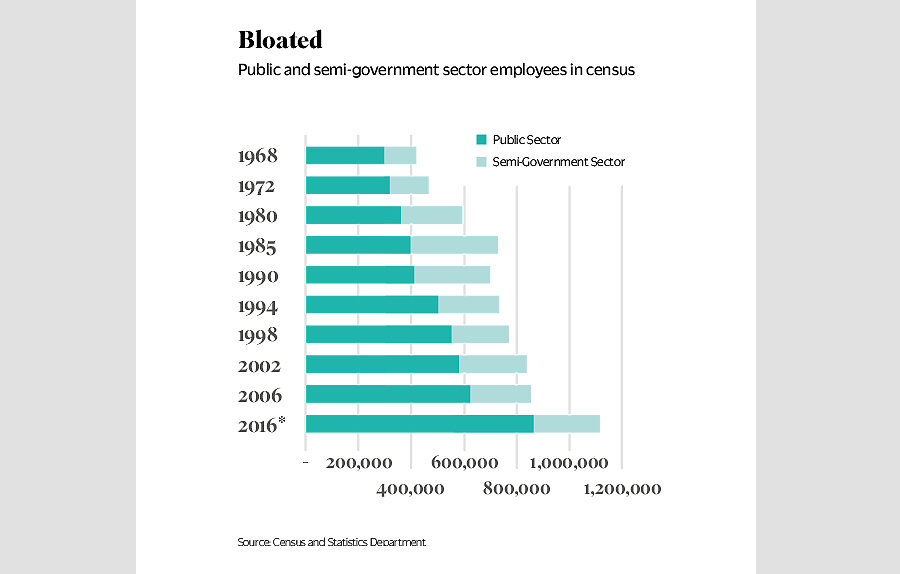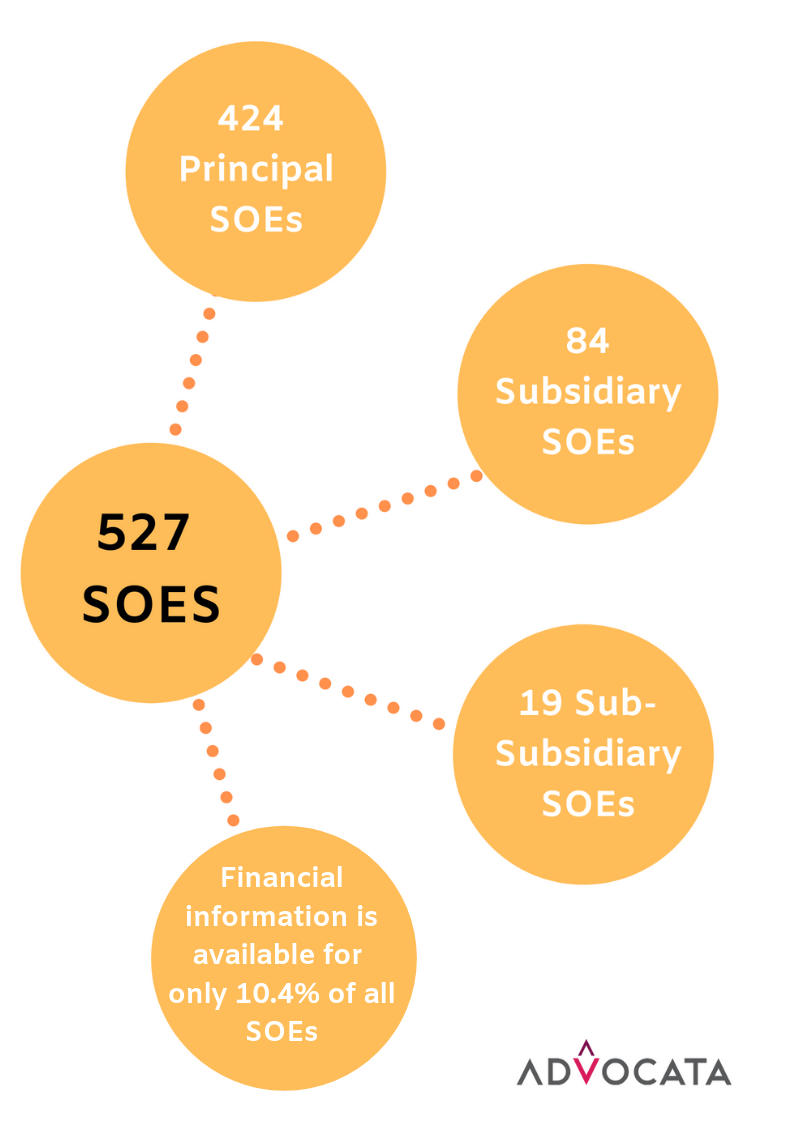Originally appeared on Echelon
By Ravi Ratnasabapathy
The Parliamentary Committee on Public Accounts (COPE) reports on state enterprises
The COPE, a key oversight committee, is by its own admission under-resourced. It lacks staff, particularly for audit and legal support. They also lack IT systems and, apparently, even a proper office. Despite these limitations and the fact that the reports are not comprehensive, they have examined a limited number of issues in a few institutions. These reports are a devastating critique of the state of governance, underlining the need for a re-think in the role of the government.
Excerpts from the reports are as follows:
SRI LANKA PORTS AUTHORITY: RS 5.8 BILLION TO CONSTRUCT SURIYAWEWA CRICKET STADIUM
As per the Auditor General’s report on the SLPA (2016):
“The Authority had conducted the architectural and construction activities of the international cricket stadium in Suriyawewa on behalf of the institute of Sri Lanka Cricket. According to the contract agreement entered into between the contractor and the Authority on the said construction, a sum totalling Rs5,838 million, inclusive of the interest amounting to Rs2,881 million, had remained payable to the contractor by the Authority up to 31 December 2016 in respect of the said constructions made under the variation order (emphasis added) of the contract for construction of the Hambanthota Harbour.”
Note: A variation order is an alteration to the scope of works in a construction contract in the form of an addition, substitution or omission from the original scope of works. While these are not unusual in large projects, it is bizarre to treat work on an entirely new and unrelated project as a variation in a port construction contract.
“Despite the non-availability of any verification that the said sum would be borne either by the Treasury or the institute of Sri Lanka Cricket, the sum had been accounted in the financial statements of the Authority as being receivable from a Government institution, but the receipt of that sum remained doubtful”(ibid).
Separately, the third COPE report observes that Sri Lanka Cricket owes the State Engineering Corporationan amount of Rs818 million on 7 projects as at 31.12.2015.
PEOPLE’S BANK DUD LOAN
1. NON-PERFORMING LOANS AT RS395 MILLION – KANDY CITY CENTRE
An overdraft facility of Rs245 million and a long-term loan facility of Rs150 million were granted to a customer for a construction named Kandy City Centre on 30 January 2009 and 27 January 2009, respectively. However, these loans were classified as non-performing loans after 3 months. Though the customer agreed to pay the loan in installments of Rs1 million per month, it was decided to offset the loan against the monthly rent to be paid on behalf of the People’s Bank branch housed at Kandy City Center.
However, even if the customer repaid the loan in monthly installments of Rs1 million each, the bank would have to wait for 62 years to recover the outstanding amount. The chairman stated that several such unsystematic transactions had been done.
Note: As per CBSL guidelines, ‘Credit facilities repayable in monthly installments: when 3 consecutive installments, principal and/or interest, have not been paid’ are to be classified as non-performing loans.
The loan granted in January 2009 was classified as non-performing within three months of disbursement, which indicates that there was no attempt at repayment. Subsequent to COPE recommendations, Rs20 million had been recovered. Legal action had been instituted, but the defendants did not appear in courts when the case was called on 1 December 2016.
Credit approval in a bank should go through multiple levels of authority – the branch manager, credit officer, credit committees, board committees and risk management committees – depending on the size of the loan. A loan in excess of Rs100 million would typically require approval at the highest levels. The chairman’s comment of ‘unsystematic transactions’ seems to indicate serious control weaknesses, further examples follow.
2. NON-PERFORMING LOANS GRANTED BY JA-ELA BRANCH AT RS619 MILLION
The Ja-ela Bank branch had granted three loan facilities and three overdraft facilities to a customer, his spouse and an enterprise; and subsequently, these loans were categorized as non-performing.
I. At the date of 12.11.2013, the outstanding balance of Rs619,867,345 of the three overdraft facilities and one loan facility could not be recovered.
II. The chairman stated that legal action has been taken to recover more than 60% of the loans that had been granted in an unsystematic manner and discussions are being held with regard to the remaining portion of the loans.
Note: Subsequent follow-up by COPE indicates that the husband and wife were directors in a company engaged in property development. Loans had been obtained in the names of the individual directors and the company. The unsettled balance of these loans was Rs197 million and the interest to be collected was Rs503 million, making the sum total due to the bank Rs700 million by September 2016.
AIRPORT AND AVIATION SERVICES
1. Rs. 7 MILLION FOR THE CONSTRUCTION OF KATARAGAMA HOLIDAY RESORT
Rs7 million had been paid to a private party in 2002 to purchase land to construct this holiday resort. Thereafter, the Kataragama Divisional Secretariat informed that the land belongs to the government and that it had been obtained on a 30-year lease from January 2008 for an annual lease of Rs460,000. However, the sum of Rs7 million paid to a private party had not been recovered.
Note: Following the COPE report, legal action had been instituted in the Gampaha District court for recovery of the Rs7 million. The question as to why the title was not properly checked prior to purchase remains unanswered.
2. AIRPORT AND AVIATION SERVICES LIMITED: RS248 MILLION PAID ON A CONTRACT SIGNED FOR RS27 MILLION TO DEVELOP AN ERP SYSTEM. THE PROJECT WAS NOT COMPLETED.
The contract had been awarded to a private company for Rs27,464,632 (without VAT) in June 2012 for the implementation of the project within 8 months. The company had paid a sum of Rs248,600,000 (without VAT) to the contractor and the period of the contract had been extended on four occasions. Though over four years have lapsed since the awarding of the contract, the contractor had failed to carry out the contract properly. The work of this institution has currently been suspended and it has submitted an appeal.
SRI LANKA TOURISM DEVELOPMENT AUTHORITY
1. SPENT A TOTAL OF RS113 MILLION ON FOUR OCCASIONS FOR WORK THAT WAS NOT CARRIED OUT
A sum of Rs11 million out of Rs29 million had been received for renovating 30 rooms of a holiday bungalow belonging to the Authority had been for work not done and overpaid taxes. According to the report obtained by the Authority from ICTAD, a loss of nearly Rs5 million has been incurred. Steps had not been taken to recover that amount from the contractor or the officer who approved the payment.
A sum of Rs3.2 million had been paid to suppliers based on three letters, which the suppliers had produced stating that they had provided dozers to construct the Kalpitiya Mohottuwasama Jetty. This payment had been made without a certificate of fixing work hours according to the daily meter reading by an officer of the authority.
Even though the Kalpitiya integrated Tourism project commenced in 2008 on an estimated cost of Rs5.5 billion in order to construct holiday resorts with 4,000 rooms and infrastructures facilities to be completed within 5 years, not a single room had been constructed despite an expenditure of Rs88.7 million at December 2014.
2. PAID RS7.3 MILLION AS PART OF THE INTEREST OF A LOAN OBTAINED BY A PRIVATE HOTEL
Four hotels had been selected close to the Hambantota International Cricket Stadium (which was selected to host cricket matches for the 2011 Cricket World Cup), to develop accommodation facilities.
It was revealed that this sum of Rs7.3 million, a portion of the 4% interest of a loan obtained by the Peacock Beach Hotel from the Bank of Ceylon, had been paid out of the Tourism Development Fund on a number of occasions. According to the documents furnished to this committee, the approval of the minister in charge had not been obtained to make the payments.
Note: A letter appended to the COPE report provides some explanation of the circumstances of this payment. It indicates that the four hotels had to be upgraded to four-star status in order to host the 2011 World Cup matches. The hotels had apparently informed the SLTDA that there was no commercial viability to the exercise and requested that the government subsidise the interest cost on the loans required to finance the upgrade.
The cost of upgrade for three hotels is indicated as being “Rs414 million”. The upgrade cost of the fourth hotel was apparently not available. The letter was written by the Director General of the SLTDA and addressed to the Secretary of the Ministry of Tourism had been copied to the Bank of Ceylon, People’s Bank and Hatton National Bank. The interest rates on the loans were supposed to be 12% and the SLTDA was supposed to pay 4% as a subsidy. Based on these figures, the subsidy for the three hotels would amount to Rs16.5 million annually, assuming loans to the values indicated were granted. It is not known if this was the case and if further liabilities exist.
NATIONAL WATER SUPPLY AND DRAINAGE BOARD
There was a cost escalation of 338% in 11 water supply projects that were funded by a bank loan of Rs54 billion. The board has received an unsolicited foreign-funded project, and work has commenced without a contract. Strangely, the NWSDB has been appointed as a sub-contractor on the project by the main contractor, to the value of $64 million (it appears that the unsolicited proposal was accepted by the NWSDB and the work has later been sub-contracted to the NWSDB itself).
Lanka Mineral Sands Ltd. spends money on tasks that are contrary to the objectives of the company – Beach Park The company’s welfare funds have been utilized for the construction of roads and buildings in various other areas in contravention to the objectives of the institution. Information pertaining to spending Rs40 million for the construction of the Hambantota Beach Park and spending money for making improvements to the Devinuwara Maha Devale have come to light.


















